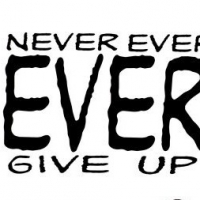Lose Weight > Weight Loss Tips > Weight Loss Articles > Secrets to Making the Great Law of Weight Loss Work for You
Secrets to Making the Great Law of Weight Loss Work for You
If, for example, given your height, frame, age, gender, and normal level of activity, you normally burn about 2200 calories a day, all you have to do is decrease your calorie intake to 1200 calories a day and increase your activity an additional 250 calories worth by, say, walking three miles a day. Your deficit for each day, then, will be 1250 calories. Over a week that would be 8750 calories, which is 2.5 lbs at 3500 calories per pound, and 10 pounds gone per month. Simple, huh?
Now let's see the hands of everybody who has done that found that it works just like that. Anybody? If it's a law then it should work all the time, right? Well, it does work just like that for a while, say 2 weeks or so, but Mother Nature has a few tricks in her bonnet. She is so adaptable. When she sees your body suffering on that 1200 calories, even divided up into six 200 calorie grazes, she worries you might be starving and so she adjusts your precious bodily metabolism so that you're just more efficient and get through the day on fewer calories. Besides, living on 1200 calories a day, every day, gets to be a major pain after a while, even for those with the strongest willpower. It's right on the verge of starvation and so, day after day, you're always a bit hungry. After about a week of this, you're REALLY hungry. And your calorie allowance doesn't ever permit those goodies that make life so much more enjoyable. And, after a month or two, the scale reading isn't budging much anymore so the incentive evaporates.
So what's a body to do? Mix things up, that's what. If you keep doing exactly the same things in terms of numbers of calories per day, proportions of good carbos, protein, and good fat, and activity, the body adapts to that, gets more efficient and you stop losing weight.
Instead of a flat 1200 calories a day, go two or three days in a row on the low side of 1200 calories and, then take an "eating" day. This isn't a license to pig out. It means eating enough to reach your normal expenditure level as, in the example above, 2200 calories. You plan for this and incorporate those treats that you really like. You can have pizza, ice cream, brownies, one of those frothy coffee drinks, whatever floats your boat, IN MODERATION on your eating day. Not all of them on the same day, but something nice. This tells you body that you're not starving and your psyche the same thing. You actually get to eat more and still lose weight.
It's also a good idea to change the ratio of calories from complex carbohydrates (the only kind we eat, right?), protein and (unsaturated) fat from time to time, within limits. The biochemical and physiological factors involved here can get pretty complex and beyond the scope of this short article, but you could try adopting a ratio of 40% of your calories from good carbs, 30% from protein, and no more than 30% (nor less than 10%) from fats as your usual mix. Then modify those ratios by no more than about 20% each (fat should only go down from 30%) from time to time and see how you feel.
Your metabolism gets a boost every time you eat, so that's why many experts recommend eating 5 or 6 small meals a day, rather than 3 or fewer. That doesn't mean your total daily incoming has to be divided into 5 or 6 equal amounts, but a snack with fewer than 100 calories won't do much to stop the hunger pangs or convince your body it has actually eaten something. Space these no more than 2 1/2 or 3 hours apart or your metabolism will go to sleep again.
Mixing it up also applies to the frequency and intensity of your exercise. It's really a big help if you get up and do something every half hour. I actually set an alarm. Every half hour I get up and do something for 5 minutes. This includes, especially, right after meals. You can take a fast walk. Do some pushups. Do some lunges or squats. Do some crunches. Practice high front kicks and back kicks. Just something fast enough and long enough to raise your body temperature (hint: guess where that heat is coming from!). Don't do the same thing twice in a row - you need to use a different part of your body. This also does wonders for your concentration. You actually get a lot more done in those 30 minute spurts, knowing that you have to get it done in that segment, not to mention all that oxygen swirling in your brain. That's in addition to your regular actual exercise periods. Keep jolting the metabolism.
Mixing it up and adding jolts also goes for your exercise regime. If you just do the same thing every day, you won't be making any progress before long. Mix up your low intensity walks with some rapid stair climbing. Mix up your jogging with some minute-or-two-long flat out sprints. Add in many reps of squats or lunges. Switch off the legs some days and do pushups, as many and bearing as much weight as you can possibly manage. Always check with your doctor first and don't try to redress years of inactivity in the first week, but if you don't challenge the body, it won't make more muscle.
There's a lot more to be said about this "jolt" approach, but I think you have the basic idea by now. Give it a try and let me know how it goes for you.
Related Articles
-
Volumetrics Adverse Events - Two Potential Outcomes
Adverse Events with VolumetricsDr. Barbara Rolls is
-
Fat Loss 4 Idiots Diet Reviews
The Fat Loss 4 Idiots diet is one of the most popular weight loss plan
-
Truth About Six Pack Abs Exposed!
For men aiming to have the desirable six packs
-
How Hypnosis Works
Have you ever thought of being hypnotized? Maybe while in college o
-
Simple Steps to Get Rid of Your Excessive-Weight Problems
Do you want to achieve significant weight loss and have a healthier
-
10 Healthy Eating Habits That Will Change Your Life
- DON'T MISS
- Anger: The Unexpected Emotion After Gastric Bypass Surgery
- Proper Nutrition For Weight Loss - Lose Weight By Eating Healthy
- Discount Medifast Explained: Which Special Offer Saves The Most Money?
- Natural Methods To Eliminate Excess Weight That Are Effective
- The Raw Food Diet Works
- Just how really feel full along with Reductil diet pills help
- Essence of Garcinia Cambogia Pills
- Consume safe capsules for weight loss
- Fat Burning Furnace System Scam
- Bikini Body Here I Come - 5 Great Reasons Not to Jump Into the Fad Diet or Crazed Workout Routine




